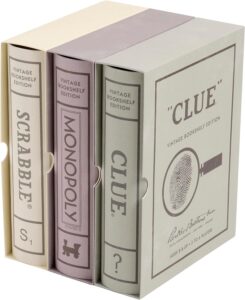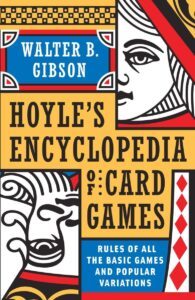The Rubik’s Cube is a 3D puzzle invented in 1974 by Hungarian architect and professor Ernő Rubik. Originally designed to help explain three-dimensional geometry, it quickly became a worldwide phenomenon, officially entering the global market in 1980. Known for its vibrant colors and intricate challenges, the Rubik’s Cube has sold over 350 million units, making it one of the best-selling puzzles of all time. Over the years, it has evolved into a symbol of intellectual prowess and has sparked a global community of enthusiasts who challenge themselves to solve it as quickly as possible.
Game Overview
- Publisher: Ideal Toy Corp (original publisher), later by Rubik’s Brand Ltd.
- Designer: Ernő Rubik
- Release Year: 1980 (worldwide)
- Number of Players: 1 (single-player puzzle)
- Playtime: Varies—minutes to hours, depending on skill level
- Ages: 8+
- Category: Puzzle, Brain Teaser
- Mechanics: Hand manipulation, pattern recognition, problem-solving
- Complexity: Medium to high, depending on the solving method and experience
How to Play
Objective
The goal of the Rubik’s Cube is simple: return the cube to its solved state so that each of the six faces shows a single, solid color.
Setup
The Rubik’s Cube starts scrambled. To begin playing, simply mix up the cube by turning its faces in random directions. Each face of the cube rotates, allowing you to manipulate the smaller cubes and change their orientation.
Gameplay
- Scramble: Rotate the cube’s faces in random directions until all the colors are mixed up.
- Solve the First Layer: Start by solving one face, commonly the white side, making sure the edge and corner pieces align correctly with adjacent colors.
- Solve the Second Layer: Align the middle edge pieces of the cube with their correct positions and colors.
- Solve the Third Layer: Position the final pieces of the top layer and orient the cube so that each face has a single color.
There are many methods to solve the cube, from beginner algorithms like the CFOP (Cross, First two layers, Orientation of the last layer, Permutation of the last layer) to more advanced techniques used by speedcubers.
Details
The cube consists of 26 smaller cubes (known as “cubies”) attached to a core, with each smaller cube featuring up to three visible faces. The middle pieces on each face are fixed in position, while edge and corner pieces rotate when the cube’s faces are turned.
Variations of the Game
- 2×2 Rubik’s Cube: A smaller, simpler version of the classic puzzle.
- 4×4 and 5×5 Rubik’s Cube (Rubik’s Revenge): Larger and more challenging versions of the standard cube.
- Rubik’s Void Cube: A variation with a hole in the middle, removing the core but maintaining similar mechanics.
- Rubik’s Mirror Cube: A shape-modification puzzle where the pieces are irregular in size, adding an additional challenge.
- Speedcubing: Competitive solving of the cube under time constraints, often using specially designed cubes for smoother turning.
Strategy Tips
- Learn Algorithms: The fastest way to solve the cube is to memorize a set of moves (algorithms) to manipulate pieces in a systematic way.
- Practice Finger Tricks: Improve speed and dexterity by mastering how to turn the cube efficiently without moving your whole hand.
- Start Simple: Focus on solving one layer first before attempting more advanced methods.
- Stay Organized: While solving, keeping pieces in place and reducing mistakes can greatly improve solve time.
Pros & Cons
Pros:
- Enhances cognitive skills such as spatial reasoning, memory, and problem-solving.
- Portable and durable; can be carried anywhere.
- Numerous methods to solve make it fun for both beginners and advanced players.
- Huge community and competitive space with speedcubing.
Cons:
- Can be frustrating for beginners who do not know algorithms.
- Requires patience and practice to master.
Who Will Enjoy This Game
People who enjoy puzzles, brainteasers, and mental challenges will love the Rubik’s Cube. It’s perfect for those who like working on problem-solving or who enjoy competitive gameplay through speedcubing. Puzzle enthusiasts who enjoy self-improvement or mastering new skills will find the Rubik’s Cube engaging.
Recommended Age Groups
- Kids (8+): Great for developing cognitive skills.
- Teens: A challenging yet enjoyable mental exercise.
- Adults: A classic brain workout and excellent for keeping the mind sharp.
Similar Games
- Megaminx: A dodecahedron-shaped puzzle with similar mechanics to the Rubik’s Cube.
- Pyraminx: A pyramid-shaped twisty puzzle.
- Ghost Cube: A shape-shifting cube puzzle where all pieces look identical, but orientation matters.
User Reviews
Many users praise the Rubik’s Cube for its simplicity and challenge. Beginners appreciate the basic problem-solving aspects, while advanced players enjoy mastering speedcubing techniques. Some players find it challenging at first but note the sense of accomplishment once they learn the solution. Others find it frustrating without guidance, though online resources and communities offer plenty of help.
FAQs
Q: Is it possible to solve the cube without memorizing algorithms?
A: Yes, but learning algorithms significantly speeds up the solving process and ensures consistent results.
Q: How many possible configurations does the cube have?
A: The Rubik’s Cube has over 43 quintillion possible configurations.
Q: How do speedcubers solve the Rubik’s Cube so quickly?
A: Speedcubers use optimized algorithms, efficient finger techniques, and customized cubes for faster turning.
Final Verdict
The Rubik’s Cube is a timeless puzzle that has remained popular for decades due to its combination of simplicity and complexity. It challenges players to think critically, strategize, and improve their mental agility. Whether used as a casual brainteaser or a competitive pursuit, the Rubik’s Cube offers endless replayability and satisfaction. It’s a must-have for puzzle lovers and those looking to sharpen their problem-solving skills.




Post Comment